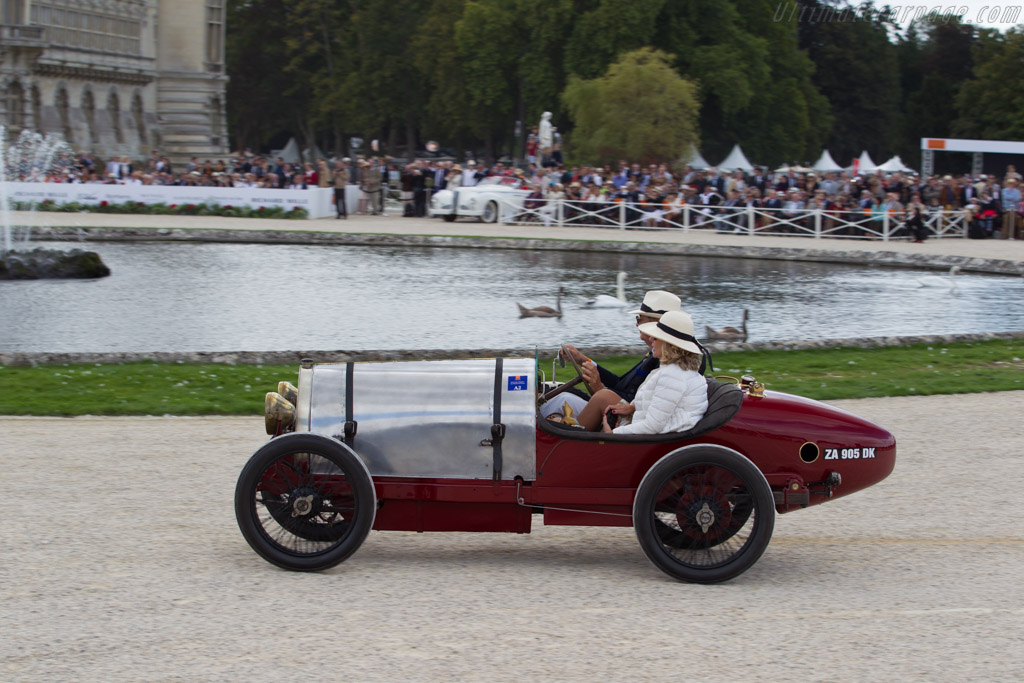None Bugatti Type 13 Brescia

The descriptions of the Classic Cars in the Directory were partly generated or supplemented with the help of artificial intelligence (AI). The content may occasionally not always be entirely accurate or factually correct despite careful checking.
The Bugatti Type 13 Brescia is a legendary sports car that stands out for its advanced engineering and sleek aesthetics. With a production run between 1910 and 1926, the Type 13 Brescia was one of the pioneering models of the Bugatti brand and remains a highly sought-after collector car today. Technical excellence is the hallmark of the Type 13 Brescia, showcased through its various cutting-edge features.
Starting with the engine, the Type 13 Brescia is powered by a four-cylinder 1.5-liter engine that produces 50 horsepower. Constructed with an aluminum crankcase, cast-iron cylinder liners, a single overhead camshaft, and steel valves, this engine was ahead of its time. It allowed the Type 13 Brescia to achieve top speeds of over 70 mph in a time when most cars could barely manage 40 mph.
The transmission of the Type 13 Brescia is a four-speed manual gearbox that is synchronized in the top two gears. It uses a multi-plate clutch that is designed to handle the high torque output of the engine. Additionally, the gear ratios are optimized for racing, making the Type 13 Brescia a formidable competitor on the track.
The chassis of the Type 13 Brescia consists of a ladder-type frame made of steel. It has a wheelbase of 88 inches, which provides a stable and well-balanced platform for the car's suspension system. The front suspension is a solid axle with semi-elliptical leaf springs, while the rear suspension uses quarter-elliptical leaf springs. This configuration allows for a comfortable ride while remaining responsive and dynamic.
The Type 13 Brescia is known for its braking system, which features large-diameter drum brakes on all four wheels. These brakes are incredibly effective and provide excellent stopping power, even when the car is traveling at high speeds. Additionally, the Type 13 Brescia features a handbrake that operates on the rear wheels, allowing for precise control of the car during parking and other low-speed maneuvers.
In terms of design, the Type 13 Brescia is a stunning example of the Art Deco style that was popular during the early 20th century. It features a sleek and low-slung body with a long hood, curved fenders, and a short rear deck. The car's body is made of lightweight materials, including aluminum and magnesium, which contributes to its impressive performance.
Overall, the Bugatti Type 13 Brescia is a masterpiece of engineering that is still revered for its technical excellence and timeless style. Whether on the road or the racetrack, this car is a true standout that continues to inspire admiration and fascination from enthusiasts around the world.
Milestones
- 1910: Ettore Bugatti founds his own car company in Molsheim, France - 1914: Bugatti introduces the Type 13, a small, lightweight car with a 1.3-liter engine and advanced engineering features - 1920: Bugatti enters four Type 13s in the Targa Florio race, finishing second, third, fourth, and fifth - 1921: Bugatti introduces the Type 13 Brescia, an upgraded version with a larger engine and better performance - 1924: Type 13 Brescia wins the Grand Prix la Sarthe, bringing Bugatti its first major racing victory - 1925: The Type 13 Brescia becomes one of the most successful racing cars of the era, winning numerous races across Europe - 1926: Bugatti discontinues production of the Type 13 Brescia to focus on larger, more powerful models - Today: The Bugatti Type 13 Brescia is considered a classic car and remains highly sought-after by collectors and enthusiasts.Technical
- The Bugatti Type 13 Brescia is a vintage sports car that was produced between 1910 and 1926. - It was powered by a 1.5-liter 4-cylinder engine that produced up to 50 horsepower. - The car had a 4-speed manual transmission and could reach a top speed of around 80 miles per hour. - Its chassis was made of steel and was designed to be lightweight, which helped improve its performance and handling. - The Type 13 Brescia had a wheelbase of 2.25 meters and weighed around 600 kilograms. - Its body was made of aluminum and was available in a range of styles, including roadster, touring, and racing. - The car was highly successful in competition, winning numerous races and rallies during its production run. - It is now considered a highly desirable collector's item and is highly sought after by vintage car enthusiasts around the world. - Only around 3,000 Bugatti Type 13 Brescias were produced, making it a rare and valuable car.